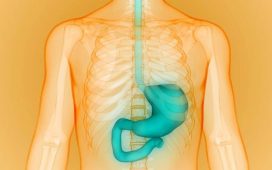By Beth Gilbert HealthDay Reporter
The annual meeting of the American Society of Nephrology (Kidney Week) was held this year from Oct. 23 to 27 in San Diego, attracting attendees from around the world, including nephrology specialists, researchers, scientists, and other health care professionals. The conference featured presentations focusing on the latest advances in the management of patients with kidney diseases and related disorders.
In one study, Hardik Dineshbhai Desai, M.B.B.S., of the Gujarat Adani Institute of Medical Science in Bhuj, India, and colleagues found that chronic kidney disease (CKD) attributable to metabolic risk factors nearly tripled in women in terms of mortality between 1990 and 2021, with significant regional and income-related disparities evident.
The authors analyzed data from the Global Burden of Disease 2021 study and found that the annual percentage change (APC) in deaths due to CKD attributable to metabolic risk factors in women increased 3.39 percent from 1990 to 2021. While total percentage change in death increased by 180.91 percent (nearly tripled/close to threefold from 1990 to 2021), the growth rate, as indicated by the APC, has remained fairly consistent across decades, showing a slight upward trend in the most recent period (2010 to 2021).
Regionally, the highest APC in incidence was observed in Andean Latin America (3.52 percent) and Central Latin America (3.03 percent). In terms of World Health Organization income level, the highest APC in incidence was observed in middle-income regions, followed by high-income regions. For the mortality rate, the highest APC was observed in high-income regions (3.23 percent).
“This calls for urgent global health strategies focusing on prevention, early detection, and management of CKD, especially in regions and populations most at risk,” Desai said. “Clinicians should focus on gender-sensitive screening for CKD, especially targeting women with a history of gestational diabetes or preeclampsia, as these conditions are linked to an increased risk of future metabolic syndrome and renal impairment. Integrating nephrology and women’s health in clinical practice can enhance early detection and intervention, thus improving outcomes.”
In another study, Giselle Peschard, M.D., of the University of California in San Francisco, and colleagues found that integrating multiple biomarkers into distinct kidney health dimensions provides valuable insights into the biological processes underlying CKD in individuals with diabetes.
Novel dimensions of kidney health were developed by combining a set of 17 urine and plasma biomarkers that had been individually associated with CKD progression in prior studies. The authors evaluated findings from two cohorts that included persons with diabetes and CKD: the National Institute of Diabetes and Digestive and Kidney Diseases Chronic Renal Insufficiency Cohort (CRIC) and the REasons for Geographic And Racial Differences in Stroke.
The researchers identified three kidney health dimensions, which were labeled as follows: systemic inflammation and filtration score (including plasma TNFR-1, TNFR-2, suPAR, and SDMA); tubular function score (including urine EGF, ADMA, and SDMA); and tubular damage score (including urine α1m, KIM-1, and MCP-1). Each was associated with CKD progression or mortality, independent of clinical risk factors, estimated glomerular filtration rate (eGFR), and albuminuria. The investigators noted that higher tubular damage and lower tubular function scores were associated with a higher risk for CKD progression in CRIC, while higher systemic inflammation and filtration scores were associated with a higher mortality risk in both cohorts.
“Predominantly capturing the health of the kidney tubules, our findings demonstrate that there are important indicators of kidney health beyond the current clinical measures of eGFR and albuminuria,” Peschard said. “These kidney health dimensions may help us to understand the heterogeneity of CKD patterns and risk for persons with diabetes.”
Millie Shah, Ph.D., from Biogen in Cambridge, Massachusetts, and colleagues furthered the understanding of the role of CD38+ antibody-secreting cells (plasma cells and plasmablasts) in immunoglobulin A nephropathy (IgAN) pathogenesis.
The authors evaluated whole blood and serum collected from patients with IgAN before, during, and after felzartamab treatment. The investigators found that the targeting of CD38+ plasma cells and plasmablasts with felzartamab resulted in durable reductions of disease-relevant biomarkers in IgAN study participants. Disease-associated IgA and galactose-deficient IgA1 were reduced following felzartamab treatment and remained reduced for at least 18 months and up to 10 months off-treatment, respectively. In contrast, the body’s IgG titers were modestly reduced and recovered within four months off-treatment, suggesting the preservation of components of the body’s adaptive immune response.
“Direct depletion of CD38+ cells may offer clinical benefit without continuous dosing, potentially lowering patient burden and offering improved tolerability,” Shah said. “Further study of felzartamab treatment in IgAN is planned in an upcoming phase 3 study.”
The study was funded by Biogen, which is developing felzartamab.
ASN: 1990 to 2021 Saw Global Rise in Chronic Kidney Disease Cases, Deaths in Women
FRIDAY, Nov. 1, 2024 (HealthDay News) — Chronic kidney disease cases and deaths in women surged worldwide between 1990 and 2021, according to a study presented at Kidney Week, the annual meeting of the American Society of Nephrology, held from Oct. 23 to 27 in San Diego.
Read Full Text
ASN: Atrasentan Significantly and Clinically Meaningfully Cuts Proteinuria
WEDNESDAY, Oct. 30, 2024 (HealthDay News) — Atrasentan is associated with a significant and clinically meaningful reduction in proteinuria compared with placebo in patients with immunoglobulin A nephropathy, according to a study published online Oct. 25 in the New England Journal of Medicine to coincide with Kidney Week, the annual meeting of the American Society of Nephrology, held from Oct. 23 to 27 in San Diego.
Read Full Text
ASN: Hypertension Most Common Cardiovascular Comorbidity Seen With Dialysis
WEDNESDAY, Oct. 30, 2024 (HealthDay News) — Hypertension is the most common cardiovascular disease comorbidity seen among dialysis patients globally, according to a study presented at Kidney Week, the annual meeting of the American Society of Nephrology, held from Oct. 23 to 27 in San Diego.
Read Full Text
ASN: Empagliflozin Offers Lasting Cardiorenal Benefit in CKD Patients
MONDAY, Oct. 28, 2024 (HealthDay News) — Empagliflozin continues to offer cardiorenal benefits for up to 12 months after discontinuation among patients with chronic kidney disease at risk for progression, according to a study published online Oct. 25 in the New England Journal of Medicine to coincide with Kidney Week, the annual meeting of the American Society of Nephrology, held from Oct. 23 to 27 in San Diego.
Read Full Text
ASN: Recurrent UTIs Impact eGFR in Children With Vesicoureteral Reflux
MONDAY, Oct. 28, 2024 (HealthDay News) — For children with vesicoureteral reflux, recurrent urinary tract infections are associated with a decrease in estimated glomerular filtration rate, according to a research letter published online Oct. 24 in JAMA Pediatrics to coincide with Kidney Week, the annual meeting of the American Society of Nephrology, held from Oct. 23 to 27 in San Diego.
Read Full Text
Copyright © 2024 HealthDay. All rights reserved.








